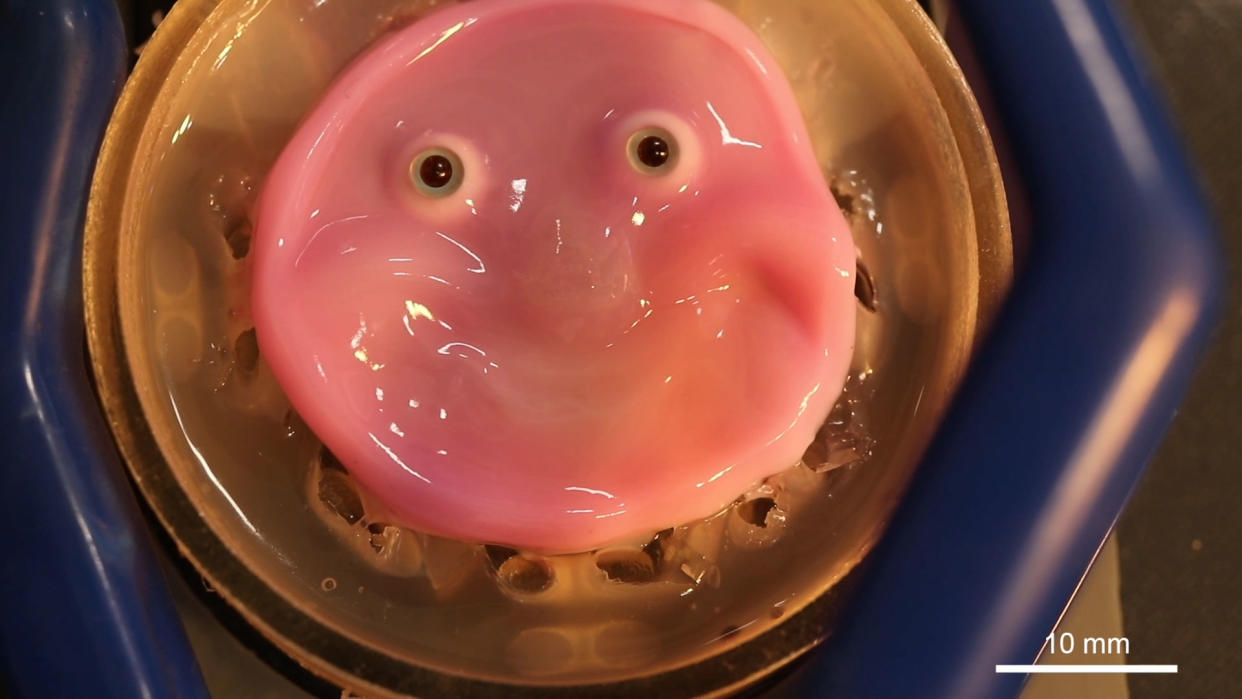Researchers Unveil New Pink Blob of Moving Skin

Researchers have discovered a new way to bind "skin" to solid structures through anchors Credit - Courtesy Takeuchi et al./Cell Reports Physical Science
Researchers on the hunt to make more complex humanoid robots have found a new way to make an artificial face move, in the form of a small, pink blob with glass eyes.
The invention, led by Professor Shoji Takeuchi of the University of Tokyo, is arguably frightening upon first glance. But scientists say the new technique could bring benefits such as “increased mobility, self-healing abilities, embedded sensing capabilities and an increasingly lifelike appearance” to robots, according to a press release. The newly-engineered face could also be useful for training plastic surgeons, cosmetics research, and possibly even drug development.
In order to bring the robot face to life, researchers made special small perforations inspired by skin ligaments. The team of scientists used a special collagen gel to adhere the fake skin tissue on.
“By mimicking human skin-ligament structures and by using specially made V-shaped perforations in solid materials, we found a way to bind skin to complex structures. The natural flexibility of the skin and the strong method of adhesion mean the skin can move with the mechanical components of the robot without tearing or peeling away,” Takeuchi said Wednesday.
Takeuchi has been at the forefront of innovation in his field. His lab, the Biohybrid Systems Laboratory, has previously worked on 3D printed lab-grown meat, and “living” robot skin, which led him to further research the topic.
Others, such as British company Engineered Arts, are also attempting to make more human-like robots like Ameca, which they describe as the “world’s most advanced” humanoid robot.
In future developments of this project, Takeychi’s team hopes to create more realistic skin by adding in sweat glands, pores, blood vessels and more.
“Of course, movement is also a crucial factor, not just the material, so another important challenge is creating humanlike expressions by integrating sophisticated actuators, or muscles, inside the robot,” Takeuchi added. “Creating robots that can heal themselves, sense their environment more accurately and perform tasks with humanlike dexterity is incredibly motivating.”
Contact us at letters@time.com.


